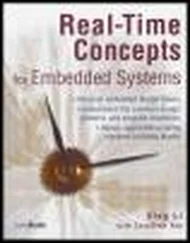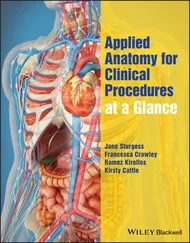1 Cover
2 Foreword Foreword Applied Concepts in Fractured Reservoirs is a much‐needed precise and practical treatment of a key topic in the energy industry and beyond. The subject of natural fractures and their impact on hydrocarbon reservoirs has been a mutual interest that I have shared with the senior author of this book, John Lorenz, for decades. In my view this will become a standard reference for geoscientists and engineers working on fractured reservoirs, for example reservoir engineers, geophysicists, geologists, and rock mechanics practitioners. It will take its place among the many other publications by the authors already addressing related issues. The importance of the book lies in the fact that it addresses what is probably the most pervasive feature of rocks: the tendency to break under natural or man‐made stresses. The authors put this in an applied context for all involved in exploration and development in the industry and in academia. In that context the book is well organized and clearly illustrated in an easy to grasp collection of applications for fracture studies, for example their impact on reservoir petrophysics, their influence on drilling, and production engineering. The book is balanced in that it introduces the reader to basic definitions and classifications of fractures and fractured reservoirs at the outset. It then proceeds by outlining a workflow for fractured reservoirs characterization and it goes on to introduce the way fractures impact operational activities. The book allocates a considerable section to discussing the impact of natural fractures on hydraulic fracturing. In my opinion such impact is not fully understood and including it in the book is a timely approach to raise questions, stimulate thoughts, and shed some light on different experimental explanations. The ability to predict the outcome when natural fractures interact with hydraulically stimulated/induced fractures in a reservoir is a challenge not yet fully achieved. Advancement in this area of hydrofracturing is a crucial step in making hydrofracturing more efficient and safer. John Lorenz and Scott Cooper, who are accomplished researchers and consultants, have produced a valuable resource on the subject of fractured reservoirs, a publication which complements previous texts, and takes the topic to a broader, up‐to‐date, applied level and scope. Mohammed S. Ameen (Ph.D., DIC, FGS) Principal Professional in Geomechanics, Emerging Unconventional Assets Department, Saudi Aramco, Dhahran, Saudi Arabia
3 Preface Preface This book is a companion to our previous Atlas of Natural and Induced Fractures in Core , moving on from the basic recognition of fracture types described in that volume, which must be the foundation of any fracture study, to explanations of how those fractures form, how they are measured, how they can be assessed, and how they affect reservoirs. This volume is the summary of decades of experience with industry doing applied fracture studies. It brings together numerous fracture‐related topics that are not collected elsewhere. We hope that it will be useful to both academia and industry, and that it is not in the vein of the apocryphal third‐grader doing a book report on penguins, who concluded that “This book tells me more than I want to know about penguins.”
4 Acknowledgements Acknowledgements Numerous people have contributed to this effort, providing reviews, materials, references, photographs, and insights. We would specifically like to acknowledge and thank Mohammed Ameen, Bruce Hart, Connie Hawkins, Nate Gilbertson, Ron Nelson, Ahmed Ouenes, David Schechter, Joe Simonson, and Norm Warpinski. Much of the original material used to illustrate this volume has come from detailed, unpublished industry studies, and we thank those companies for allowing us to use the material, sanitized for publication. We would also like to acknowledge all of the astute people who over the years have worked in this amazing field of study and whose published papers were used throughout this text. We would also like to thank our wives, who, knowing better than we did the size of the undertaking, said “Sure, why not?” when asked if we might carve the needed time from family commitments.
5 Introduction
6 Part 1: Understanding Natural Fractures: Fracture Types, Dimensions, and Origin1.1 Introduction 1.2 Nomenclature and Fracture‐Classification Systems 1.3 Fracture Characteristics and Dimensions 1.4 The Mechanics of Fracturing Rock in Extension and Shear 1.5 Other Fracture Types Appendix 1.A The Relationship BetweenPore Pressure and the In Situ Effective Stresses Note
7 Part 2: Measuring and Analyzing Fractures in Reservoirs2.1 Introduction 2.2 Planning a Core Program for Fracture Analysis 2.3 Logging Core for Fractures 2.4 Taking, Measuring and Analyzing Fracture Data 2.5 New Core vs. Archived Core 2.6 Oriented Core 2.7 Using CT Scans 2.8 Fracture Data from Image Logs 2.9 Comparing Fracture Data from Outcrops, Core, and Logs 2.10 Fracture Data from 3D Seismic Surveys* 2.11 Fracture Data Acquired by LiDAR 2.12 Fracture Data from Engineering Tests 2.13 Case Studies in Estimating Fracture Effectiveness from Core APPENDIX 2.A Workflow and List of Tests, Data Appendix 2.B Core‐Handling,Marking, Sampling, and Analysis Protocol for Core Studies Focused on Natural Fractures Appendix 2.C Slabbing Recommendations for Horizontal Core Note
8 Part 3: Effects of Natural Fractures on Reservoirs3.1 Introduction 3.2 Classification 3.3 The Permeability Behavior of Individual Fractures 3.4 The Effects of Fracture Systems 3.5 The Sensitivity of Fracture Permeability to Changing Stress 3.6 Fracture Volumetrics 3.7 Effects of Fractures on Drilling and Coring 3.8 Completions: The Interaction Between Natural and Hydraulic Fractures
9 References
10 Index
11 End User License Agreement
1 Part 1 Table 1.1 Fracture nomenclature as used in this volume.Table 1.2 An example of the mean compressive strengths for selected sedimentary ...Table A.1 Calculated effective vertical stresses in a reservoir at 10,000 ft dep...Table A.2 Calculated effective horizontal stresses in a reservoir at 10,000 ft d...Table A.3 Calculated differential between the maximum (σ V, from Table A.1) and m...
2 Part 2Table 2.1 Summary of the average parameters for each of three fracture sets in t...Table 2.2 Summary of extension‐fracture density* and effectiveness†.Table 2.3 High‐angle extension‐fracture summary chart*, all four cored formation...
3 Part 3Table 3.1 Nelson's Fractured‐reservoir Classifications.Table 3.2 The injected volumes of hydraulic fracture fluid, and the weights of p...Table 3.3 List and characteristics of the six reported attempts to stimulate oil...
1 Part 1 Figure 1.1 Left : two calcite‐mineralized vertical extension fractures captured... Figure 1.2 Deformation in compression in the laboratory (from Griggs and Handi... Figure 1.3 Left : Anderson's (1951) three ideal orientations for pairs of conju... Figure 1.4 Wispy tendrils of clay and hydrocarbon, derived from the underlying... Figure 1.5 Quartz‐filled en echelon veins in silicified sandstone, southwester... Figure 1.6 The difference between a normal population distribution ( top ), a lo... Figure 1.7 Left : diagram of the ideal fractography of an extension fracture (a... Figure 1.8 Accretionary, congruent steps formed of comminuted host rock and li... Figure 1.9 Stepped shear‐fracture faces. Top left : asymmetric calcite slickenc... Figure 1.10 Top : bed‐normal, inclined extension fractures can form due to exte... Figure 1.11 Fracture dip angles:
Читать дальше












